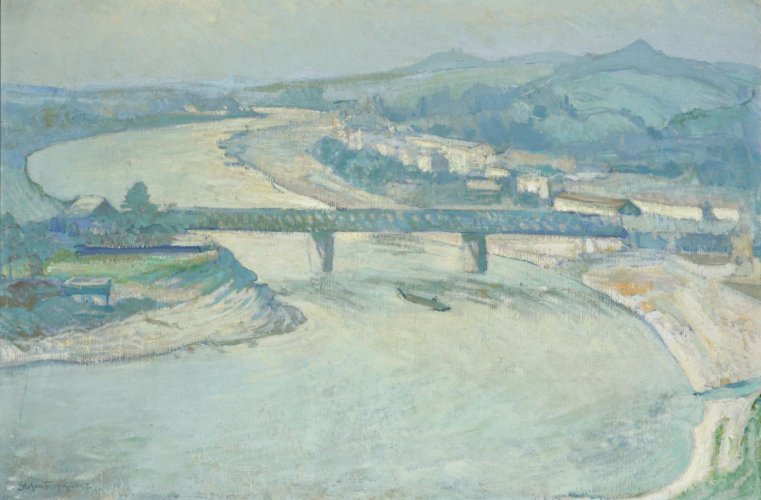Description:
Stefan Filipkiewicz (1879-1944) studied at the Krakow Academy of Fine Arts, among others, by Jan Stanisławski, whom he was a continuator of. He exhibited his paintings throughout Europe and received numerous awards. He was mainly engaged in landscape painting, dominated by winter views of the Tatra and Podhale Mountains.
Description of the painting:
Kraków seen through the eyes of Filipkiewicz is pale blue, almost unreal, like a fairytale land. But it depicts a real view from Wawel Hill down to the winding Vistula River cut by the lattice Zwierzyniecki bridge, also called the Dębnicki Bridge. It was a railway–road bridge that separated the city of Kraków and the village of Zwierzyniec from the village of Dębniki. They were incorporated into the city of Kraków in the year this painting was made. The bridge was destroyed by the retreating Germans in 1945. In its place now stands a new one, built after the war. On the right bank of the Vistula stands the Kościuszko Mound.
The artist was renowned for his paintings kept in cold, blue–white colours, in which the hills, mountains and Tatra valleys look almost like fantastic, fairy–tale worlds. Filipkiewicz achieved this effect through simplifications of the views, revealing Japanese influences, but also through perfectly chosen frames. In the painter‘s compositions we can find heavy, white pines hanging over cold streams flowing through the pure landscape, white peaks, snow–covered houses in the distance, as well as perfectly applied aerial perspective. In the omnipresent white, the sun reflects off with its multi–coloured glimmers. The artist also painted spring and summer pictures, in which the gamut of colours flows over meadows full of herbs, flowers and grasses. Filipkiewicz is considered to be a continuator of Jan Stanisławski‘s creative thought.


